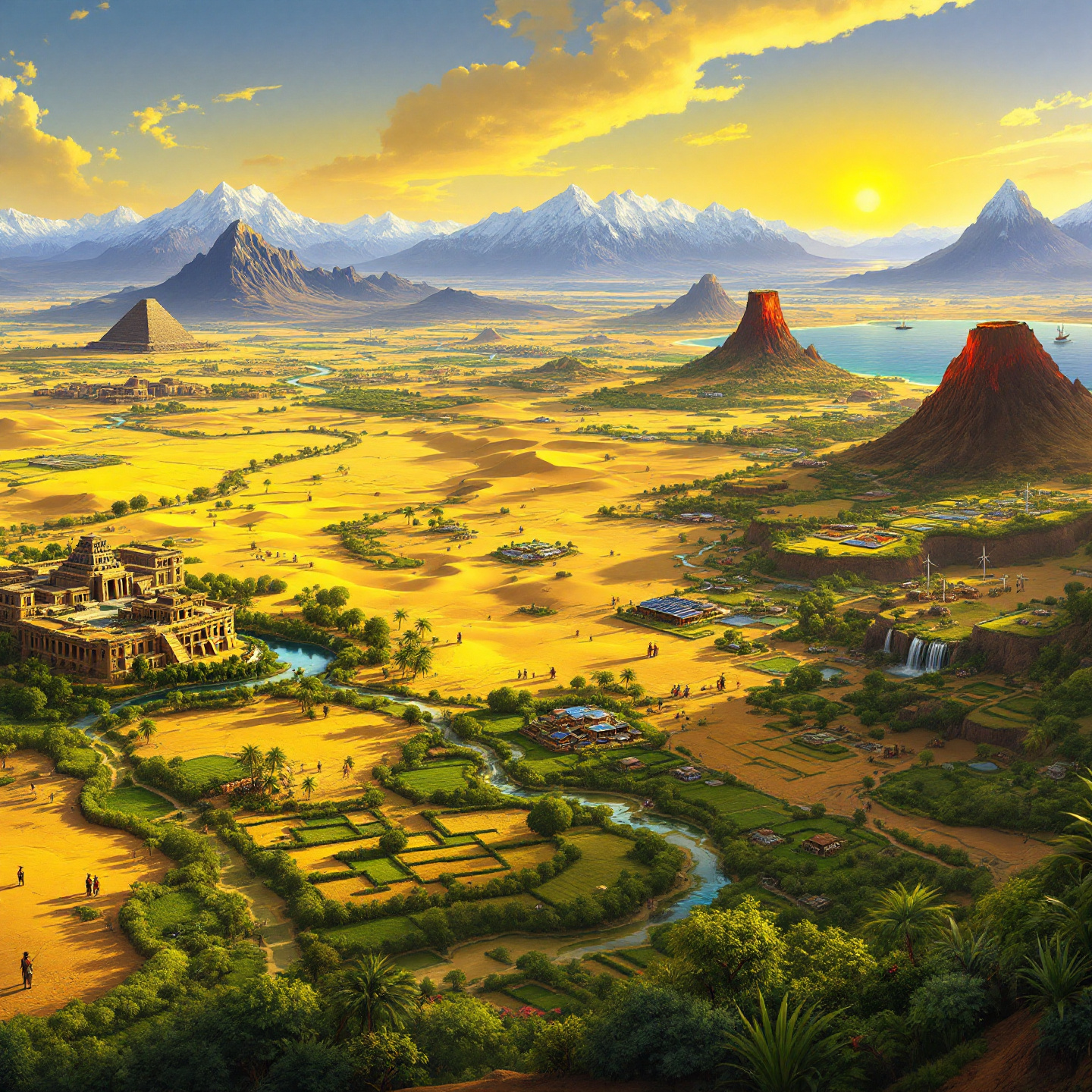The rise and fall of civilizations are often attributed to human ingenuity, yet beneath the surface lies the guiding hand of geography, climate, and natural resources. These forces silently dictate the opportunities, challenges, and limits that shape societies. Understanding their influence offers a deeper appreciation of the influences on the human history.
Geography: The Stage Where Civilizations Are Born
Geography lays the foundation for where and how civilizations develop. Regions blessed with fertile lands, navigable rivers, and access to sea routes create natural advantages that fuel growth. Ancient Egypt thrived along the Nile River, where predictable flooding provided fertile soil and easy transportation, while Greece’s position on the Mediterranean made it a hub for trade and cultural exchange.
In contrast, isolation presents both challenges and opportunities. Ancient China and Japan, shielded by mountains and seas, cultivated unique cultures, but this insulation slowed their adoption of global innovations. Japan’s Edo period exemplifies this dynamic. Centuries of isolation preserved its traditions but delayed industrial progress until global interaction forced change in the 19th century.
“Geography sets the stage, but it is humanity that crafts the script.”
Climate: The Silent Force Shaping History
Climate influences civilizations in profound yet understated ways. Moderate climates, with their predictable seasons, support stable agriculture and foster innovation. Europe’s temperate weather, for instance, provided consistent crop yields, enabling societies to focus on technological and cultural advancements that culminated in the Industrial Revolution.
Extreme climates, by contrast, often limit growth, presenting harsh challenges to survival. However, such adversity can also drive resilience and creativity. Natural disasters like the 2004 Indian Ocean tsunami devastated communities but spurred international cooperation and innovations in disaster management.
“Climate is history’s quiet architect, silently shaping the boundaries of prosperity and survival.”
Natural Resources: The Wealth and Peril of Civilizations
Natural resources are double-edged swords, offering both opportunity and risk. Civilizations like Mesopotamia flourished due to the abundance of fertile soil and oil-rich nations today wield immense geopolitical power. Yet overdependence on resources can lead to stagnation and mismanagement, as seen in Venezuela, where reliance on oil wealth has resulted in economic collapse.
The earth’s finite resources also act as a constraint on growth. Societies that deplete their environments often face collapse, as evidenced by Easter Island, where deforestation and soil depletion led to societal failure.
Conversely, innovative approaches can mitigate these challenges. Israel’s advanced irrigation systems, which transformed arid land into productive farmland, highlight humanity’s capacity to adapt. The balance between resource use and sustainability is key to long-term prosperity.
“Nature is patient, but not indulgent, it rewards balance & punishes excess.”
Unequal Gifts of Nature: A World of Disparities
Nature’s bounty is unevenly distributed, creating stark differences in the starting points of civilizations. Eurasia’s fertile crescent zones offered a wealth of domesticable plants and animals, providing early agricultural advantages. Africa, despite its rich biodiversity, lacked many species suitable for domestication, while the Americas had fewer cultivable crops and large mammals. Australia’s limited resources further curtailed societal development.
These disparities shaped the trajectories of civilizations across the globe, determining the pace of technological and societal advancements. Nature’s gifts may be unequal, but their consequences ripple through history.
“Nature’s gifts are rarely fair, but their consequences are profound.”
Polynesia: A Case Study in Environmental Adaptation
Polynesia, a vast region of islands in the Pacific, illustrates how geography and resources influence societies. The islands vary greatly, from resource-rich volcanic lands like New Zealand to small, barren coral atolls. On larger islands, abundant resources supported dense populations and hierarchical societies, while smaller islands fostered egalitarian communities built on cooperation and shared governance.
Despite their shared ancestral culture, the environmental differences between islands shaped distinct societal structures.
Social Structures: Cooperation or Hierarchy?
The availability of resources often determines how societies organize themselves. Resource-poor regions, where survival depends on collaboration, tend to develop egalitarian systems. In such environments, power is shared to maintain stability and prevent conflict. On the other hand, resource-rich areas allow the concentration of surplus, giving rise to hierarchies and centralized power.
For example, Tonga, with its fertile lands, supported a stratified society led by powerful chiefs, while smaller Polynesian islands like Anuta relied on cooperative governance to survive. This pattern persists today, where the management of resources often correlates with economic and political systems. Societal structures grow from the soil they stand on.
Competition and Innovation: The Driving Forces of Progress
The struggle for resources often sparks conflict, but it also drives technological and organizational advancements. Larger islands and continents, where competition was fierce, developed advanced weaponry and governance systems. Polynesian societies with plentiful resources experienced conflicts that spurred innovation, while smaller, resource-scarce islands remained relatively static.
A similar dynamic played out during the Cold War, where the arms race between the United States and the Soviet Union, though rooted in rivalry, led to groundbreaking achievements like space exploration. Progress often emerges from necessity and competition, proving that adversity can be a powerful catalyst for change.
“The same seeds grow differently in fertile soil than in barren land, environment molds destiny.”
Lessons for the Modern World
The forces of geography, climate, and natural resources remain as influential today as they were in the past. While nature sets the parameters of possibility, human resilience and innovation determine the outcome. Civilizations that fail to balance resource use with sustainability risk collapse, while those that adapt and innovate can thrive even in challenging environments.
As modern societies grapple with climate change, resource depletion, and geopolitical tensions, the lessons of history remind us that the path forward lies in understanding and respecting the limits and opportunities presented by nature. Humanity’s story is not just one of survival but of learning to coexist with the planet that sustains us.
“Nature’s rules are unyielding, but humanity’s resilience can rewrite its fate.”



